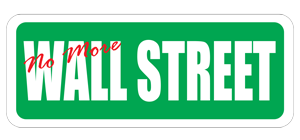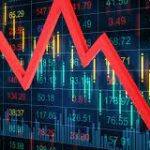At  a speaking engagement this week, I posed an interesting question to the audience in light of the tumbling stock market. It was an idea I had picked up from a conversation a colleague had with a client earlier in the week. I asked – by show of hands – how many were afraid to open up their next investment statement. I never expected that well over half the room would raise their hands.
a speaking engagement this week, I posed an interesting question to the audience in light of the tumbling stock market. It was an idea I had picked up from a conversation a colleague had with a client earlier in the week. I asked – by show of hands – how many were afraid to open up their next investment statement. I never expected that well over half the room would raise their hands.
I followed up with a second question. “How many of you – given the choice – would put your money into something that could never go down in value, but would never go up more than 13% in a given year?” Almost every hand shot up.
This is what I’ve been preaching for 5 years – because exactly that kind of outcome is available to every person reading this. Yet only now is that message starting to resonate. Human nature is a funny thing indeed.
Let’s understand where we sit at the moment. Here’s how USA Today characterized what’s happened in the last several months.
“The stock market rout is starting to get really expensive — destroying $2.3 trillion from the market’s top last year and $1.5 trillion in net wealth just this year.
The giant companies that predominantly populate the Standard & Poor’s 500 have fallen an average of 8.9% this year — which, when translated into dollars, is real money. Real big money.
The S&P 500 is down 8% this year already — including another 2.2% Friday — in what’s been the worst start to a year ever. Since the market peak on May 21, 2015, the market has declined 11.7%.”
So how should we, as average investors react to news like this? A good start is for us to get real about our money.
The same client who expressed her fear of opening her statement, had earlier expressed her enthusiasm about moving her money into the kind of ‘never-lose-with-a-good-upside’ investment I just described. But now she was hesitant because closing out her position would mean locking her mounting losses.
Point 1: With all due respect ma’am, you’ve already lost the money. There is no such thing as a paper loss versus a real loss (unless you’re the IRS). When your account goes down in value, money has left your account and gone into someone else’s account – period.
Point 2: Not only is that money lost – it will never be yours again. Account balances may recover, but losses never can be. When money leaves your account via a loss, it will never be ‘your money’ again. What’s left in your account may grow to replace that loss, but the loss is real – and it is permanent. Losses can never be recovered.
Point 3: Losses are much more expensive than we believe. Let’s say you’re a 40 year-old with a 401k balance of $250,000 on May 21, 2015 – the market’s peak . You’ve lost 10% or $25,000. Had you not lost that money – and had it grown by an average of just over 7%, that $25,000 would have given you an extra $200,000 at age 70. Would that make a retirement lifestyle difference? Because that’s what you’ve lost – not just $25,000.
Point 4: Crossing your fingers and hoping for a little rebound before you move to safety is not a strategy. I suggested my colleague call his client and ask her how she’s going to feel if her money loses another 10% before she decides to flee to safety? What if her Unicorn never comes?
We don’t buy car insurance after the wreck – or home insurance after the fire. We do so before calamity befalls us. So why is it that we don’t similarly care for our money – which – arguably – is much more important to us in the long run.
USA Today says we’re down 11.7% since May 2015. How many kids won’t go to college now because Mom and Dad’s accounts have been beaten up? How many aspiring retirees will have to put off their plans for another year – or five? How many other dreams are on hold – or are fading into obscurity?
And all of it – 100% – is completely avoidable. If the allure of huge market gains is too irresistible for you to ignore, at least have some of your money in safe investments. If you’re afraid to open your statement, all of your money’s in the wrong place already.
With today’s product array, we don’t have to give up gains for safety – we just have to be smart enough to know how, and curious enough to find those who have better options. That’s what my team does – and we’d love to work for you.





